Verizon 5G: all the phones, deals, coverage and pricing you need
The Verizon 5G network is offering improved coverage in several larger cities

For mobile users in the UK:
Get all the latest EE 5G deals
See the latest phones on O2 5G
Check out Three 5G broadband
Get the latest Vodafone 5G info
For mobile users in the US:
See the hottest AT&T 5G deals
Check out T-Mobile 5G
The Verizon 5G Ultra Wideband network was the first 5G technology service to launch globally.
The network started rolling out 5G with Verizon 5G Home Internet (see below) at first, subsequently launching the first commercial 5G mobile network globally in April 2019. It's now live in more than 60 US cities, which isn't as many as you might expect given it was first to launch. The network is committed to focus on 5G in the high-band mmWave spectrum (see below for more on this).
Then, Verizon has followed rivals T-Mobile and AT&T to launch nationwide low-band 5G (which doesn't provide much better speeds than 4G and uses dynamic spectrum sharing (DSS). This enables Verizon's 5G service to run simultaneously with 4G LTE on multiple spectrum bands.
Verizon says that customers are starting to move around more as 2021 moves on -mobile handoffs ) when a data session moves from one cell site to another) "have increased 28% since mid-January, and have increased 31% compared to last year at this same time."
Verizon took the lead for Everyday 5G data reliability in RootMetrics' recent 5G Scorecard where 65 locations were tested. By this metric, it was significantly ahead of both AT&T and Verizon.
Verizon was very successful in the recent US C-Band auction and the company spent over $50 billion to secure between 140 and 200 Mhz of C-Band spectrum in every available market. C-Band is mid-band, which is currently the world's most popular for 5G.
As a result Verizon says it expects to offer more 5G bandwidth to around 100 million people over the next 12 months. Verizon believes it can cover more than 175 million people and by 2024, when the remaining C-Band is cleared, more than 250 million people are expected to have access to Verizon’s 5G Ultra Wideband.
C-band equipment is now currently being deployed across Verizon's network. As well as using Ericsson kit, Verizon will also use Samsung’s Massive MIMO radios.
"We’re moving fast, with cooperation from our equipment partners, to have everything in place as soon as this C-band spectrum is cleared for use," said Kyle Malady, Verizon's chief technology officer.
"This is a massive undertaking designed to add this game-changing capability as quickly as possible to the network our customers already rely on for consistent, superior performance when they need it most."
Verizon has also enabled its 5G service in 13 NFL stadiums including Bank of America Stadium, Empower Field at Mile High, CenturyLink Field, Ford Field, Gillette Stadium, Hard Rock Stadium, Lucas Oil Stadium, MetLife Stadium, M&T Bank Stadium, NRG Stadium, Soldier Field and U.S. Bank Stadium.
The Verizon 5G service will be available in selected areas of each stadium - the network says it is concentrated in parts of the seating area but service may be available in other areas.
Verizon is also working with Zyter to improve fan health in stadia: Zyter ThermalAlert can automatically monitor the temperatures of fans as they walk into a venue. Check out how that works here:
Verizon also teamed up with Wi-Fi provider Boingo to bring its 5G Ultra Wideband service indoors to places like airports, office buildings, stadiums and other public spaces.
The network has also launched a partnership with Mastercard to working with the payments provider to explore how 5G can help develop payment technologies in the coming years. The idea is to make it frictionless for 5G enabled devices to accept payment, meaning things should be easier for both businesses and consumers.
The network has a technology called Tap on Phone, which essentially enables compatible phones to be able to accept payment.
"Business needs and consumer demands constantly fluctuate," says Sampath Sowmyanarayan of Verizon Business.
"Coupling Verizon’s leading global IP network and transformative 5G technology with Mastercard’s deep industry expertise, leading services and solutions, and a strong commitment to innovate, is a partnership that aligns perfectly with what we are striving to achieve at Verizon and one that can create game-changing solutions."
Verizon 5G cities
After criticism from users, media outlets and rivals, Verizon belatedly released coverage maps of all the cities it is currently offering 5G services in.
T-Mobile originally made fun of Verizon's 5G rollout with a campaign targeting Verizon's limited rollout, concentrating on mmWave locations rather than a wider low-band rollout.
But Verizon is also now using lower band technology to bring a lower spec service to a wider audience.
Verizon's mmWave network - known as 5G Ultra Wideband - is only available in selected areas of each city - so while speeds are great, coverage isn't as yet.
More than 70 US locations have received Verizon 5G Ultra Wideband since the network launched.
The latest launch of new locations for Ultra Wideband include Niagara Falls, along the Jersey Shore, Delaware Beaces and Ocean City, MD.
On the Jersey Shore: 5G Ultra Wideband coverage is available in Long Branch, downtown Asbury Park, Bradley Beach, Sea Girt, Manasquan, Long Beach, Margate City, Sea Isle City, Atlantic City, Long Branch Beach, Asbury Park Beach, Sea Girt Beach, Holgate, Brant beach, Spray beach, Bradley Cove, North Ocean City and more.
At the Delaware Beaches: 5G Ultra Wideband Coverage is available in Dewey Beach, Bethany Beach, South Bethany Beach, Fenwick Island and more.
In Ocean City, MD: 5G Ultra Wideband is available in Butterfish Cove, the Coastal Highway, Pacific Avenue, Worcester Street, S. Philadelphia Ave., St Louis Avenue, N. Baltimore Avenue and more.
Veriozon says these airports are also now enabled for 5G Ultra Wideband: Chicago O’Hare, Columbus, San Antonio, Des Moines, Salt Lake City, Milwaukee, Dulles International, Chicago Midway International, McCarran International, Tampa International, Indianapolis International, Reagan International, John Wayne Airports and coming soon, Pittsburgh International Airport.
Verizon's lower band offering is called 5G Nationwide. It uses dynamic spectrum sharing (DSS) meaning it can run alongside 4G LTE. Verizon says the service is currently available for more than 230 million people across 2,700 cities in the US.
There is a full guide to the areas covered in each US city at Verizon's 5G Ultra Wideband FAQ page - as we've mentioned elsewhere, coverage is patchy.
Verizon 5G phones
You’ll need to have a 5G phone to take advantage of 5G networks, of course. Verizon has devices from Apple, Samsung, LG, Google, Motorola, OnePlus, Nokia and TCL available currently for its network.
Verizon is now offering new and existing customers free 5G phones with select plans when you trade in an older device - the 5G phone war is hotting up. In order to qualify, you will need to sign up for one of the three unlimited data plans that Verizon offers, costing from $70 to $80 per month or be an existing subscriber to one of those plans. You'll need to sign a 24 month deal.
For example if you trade in iPhone 8 or Galaxy S8 or newer, you'll get the equivalent of $700 off a new iPhone or $800 off a new Android phone. And if you're moving from another provider you also get a $300 prepaid credit card to spend.
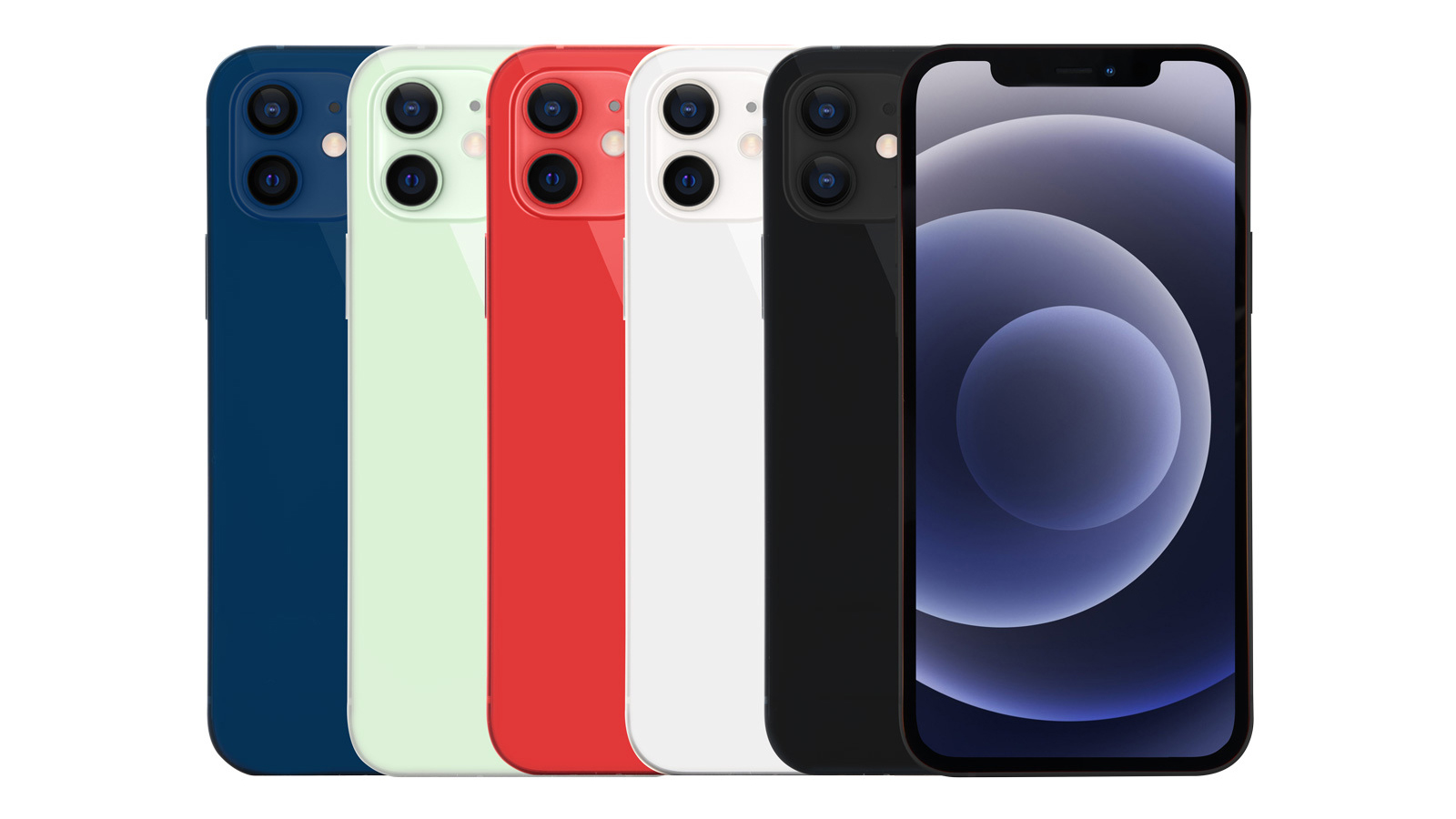
Apple iPhone 12 and iPhone 12 mini
As well as the standard iPhone 12, there's also a new iPhone 12 mini and both are available on Verizon. The iPhone 12 series is Apple's first range of 5G phones. They use Qualcomm modems inside. The standard iPhone 12 is the pick of the entire series at 6.1-inches. Both iPhone 12 and iPhone 12 mini are available in Black, White, Red, Green and Blue.
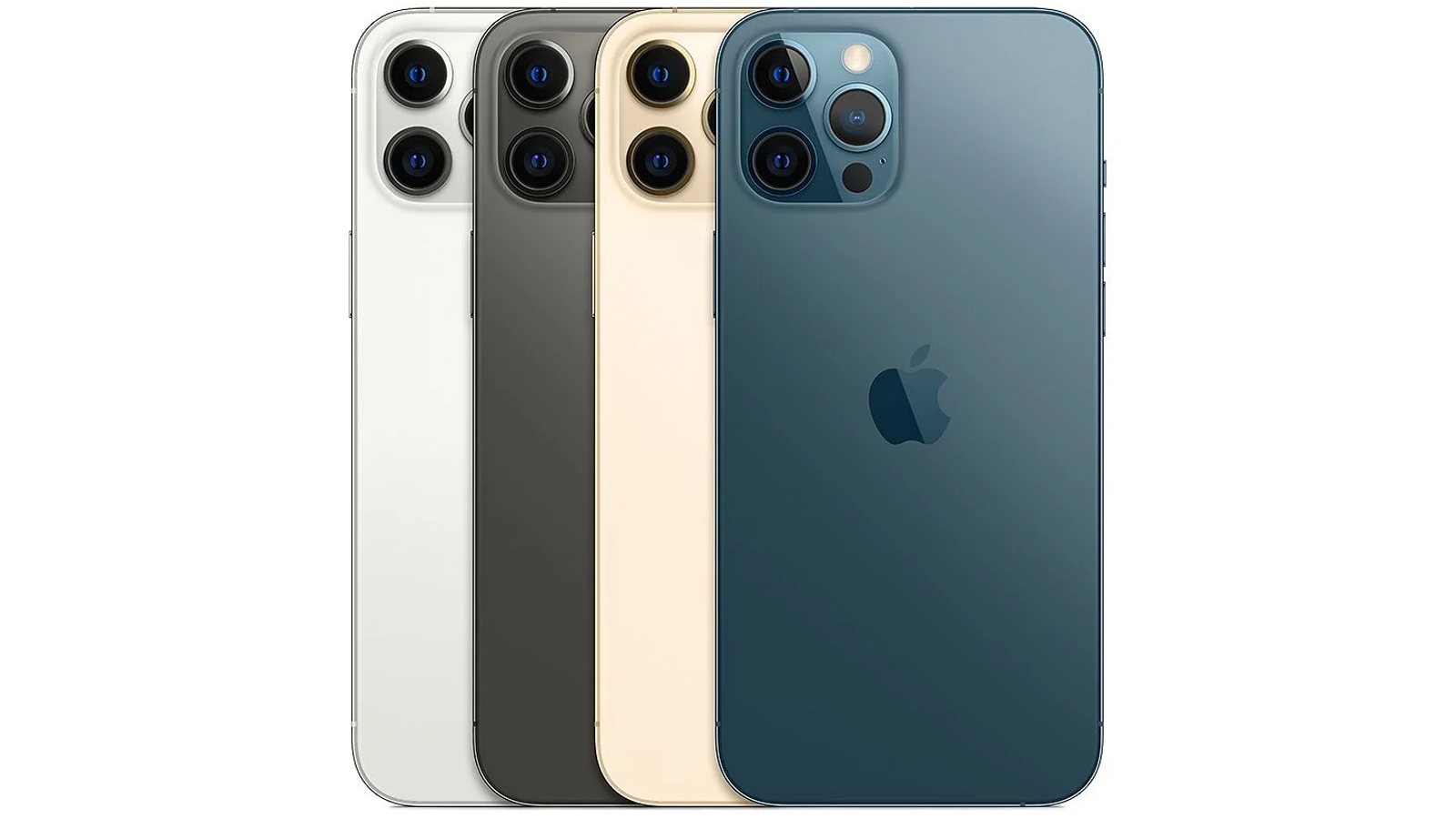
Apple iPhone 12 Pro and iPhone 12 Pro Max
The iPhone 12 Pro is the same 6.1-inch size as the standard iPhone 12, but the Pro Max steps things up a gear to 6.7-inches, making it the largest-ever screen on an iPhone. It includes a few extra camera smarts over the other models and low light performance is quite remarkable. However, you've got to really want an extra camera lens to step up to the Pro, as well as the super-sized screen if you go as far as the Pro Max.

Samsung Galaxy S21 5G
This year's S Series phone is one of the best we've ever seen, though Samsung's everyday flagship is no longer a rarity - the rest of the smartphone market has caught up. However, Samsung is still using pretty top-notch tech here, with the Qualcomm Snapdragon 888 platform in addition to a stunning 6.2-inch AMOLED display. The camera system is much improved from earlier versions, while the battery life is pretty great, too.
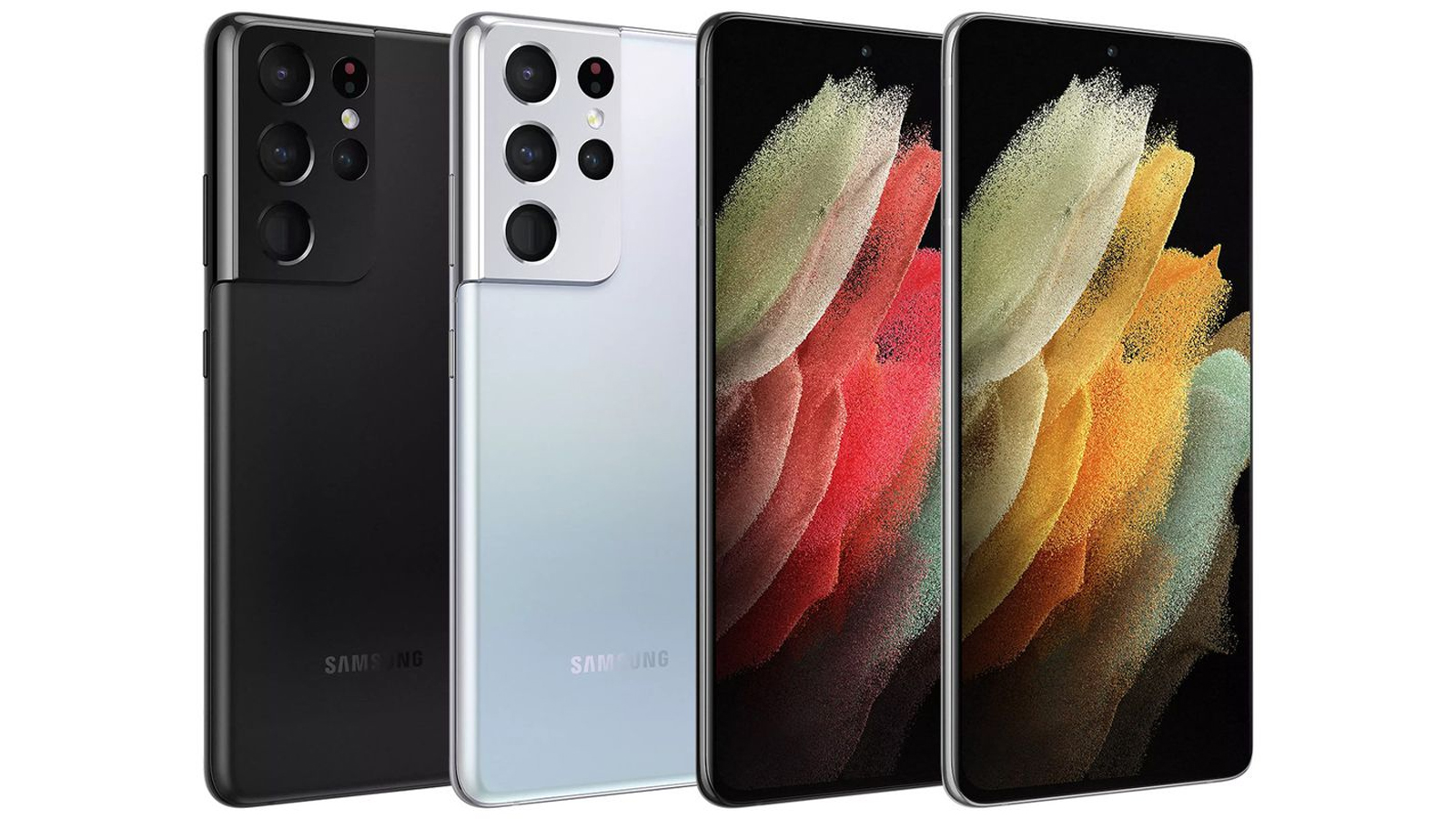
Samsung Galaxy S21 Ultra
The 6.8-inch S21 Ultra is huge and rather more expensive than its brother. It is definitely the best S21 if you can afford it, largely because of its five-camera setup which includes a 10x optical zoom, the best zoom of any phone camera. Like the standard S21 it runs on Qualcomm Snapdragon 888. It even has support for the S Pen, usually found on the Galaxy Note.
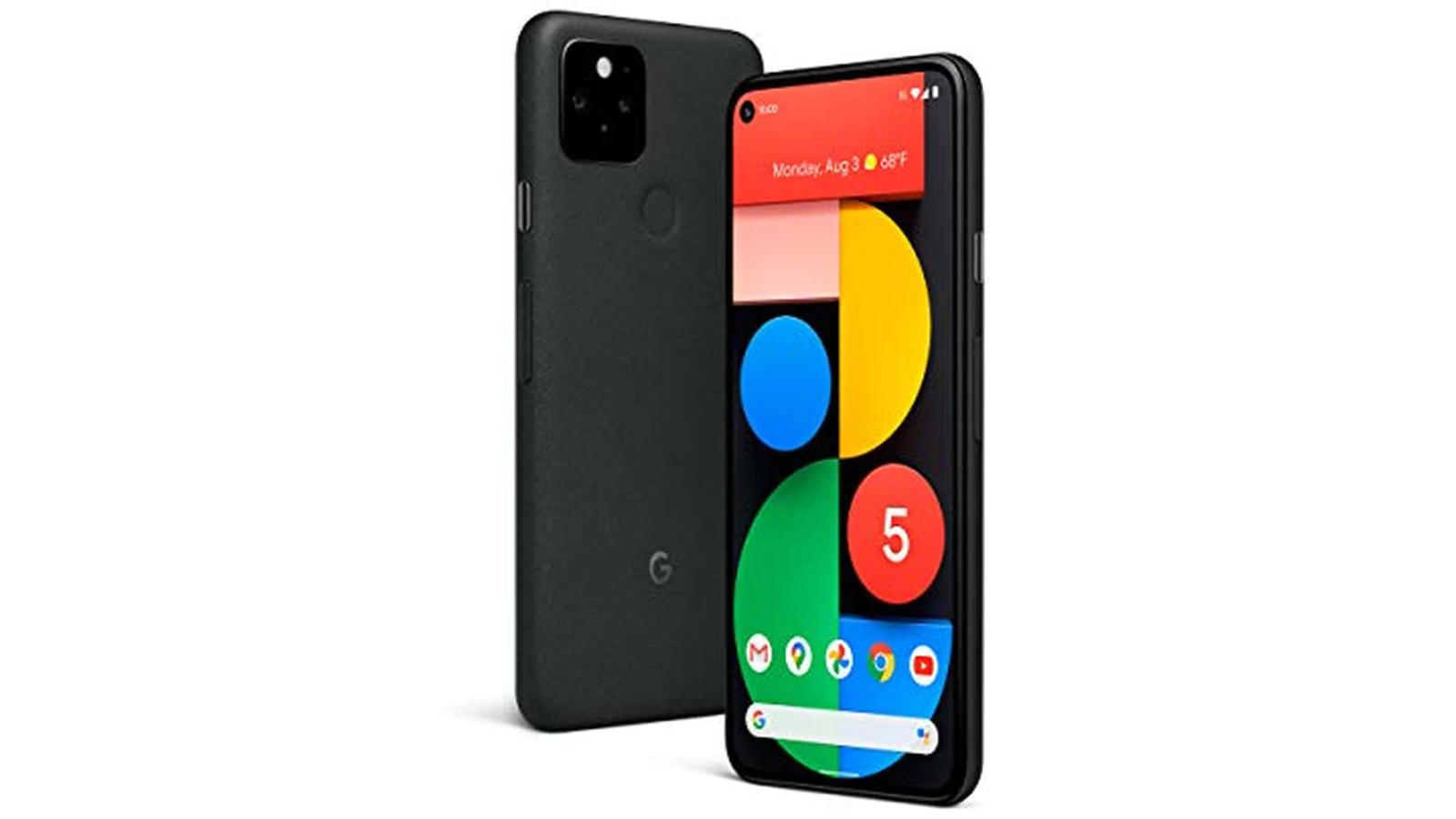
Google Pixel 5
The Pixel 5 is one of the best 5G Android phones available at present and will get all the new Android updates first, being an official Google phone. There's a 6-inch OLED display plus 128GB of storage and 8GB of memory plus a dual-lens camera system with 12.2 wide and 16 megapixel ultrawide lenses. The device - like other Pixel phones - is based on Qualcomm hardware. In this case it's the Snapdragon 765G.
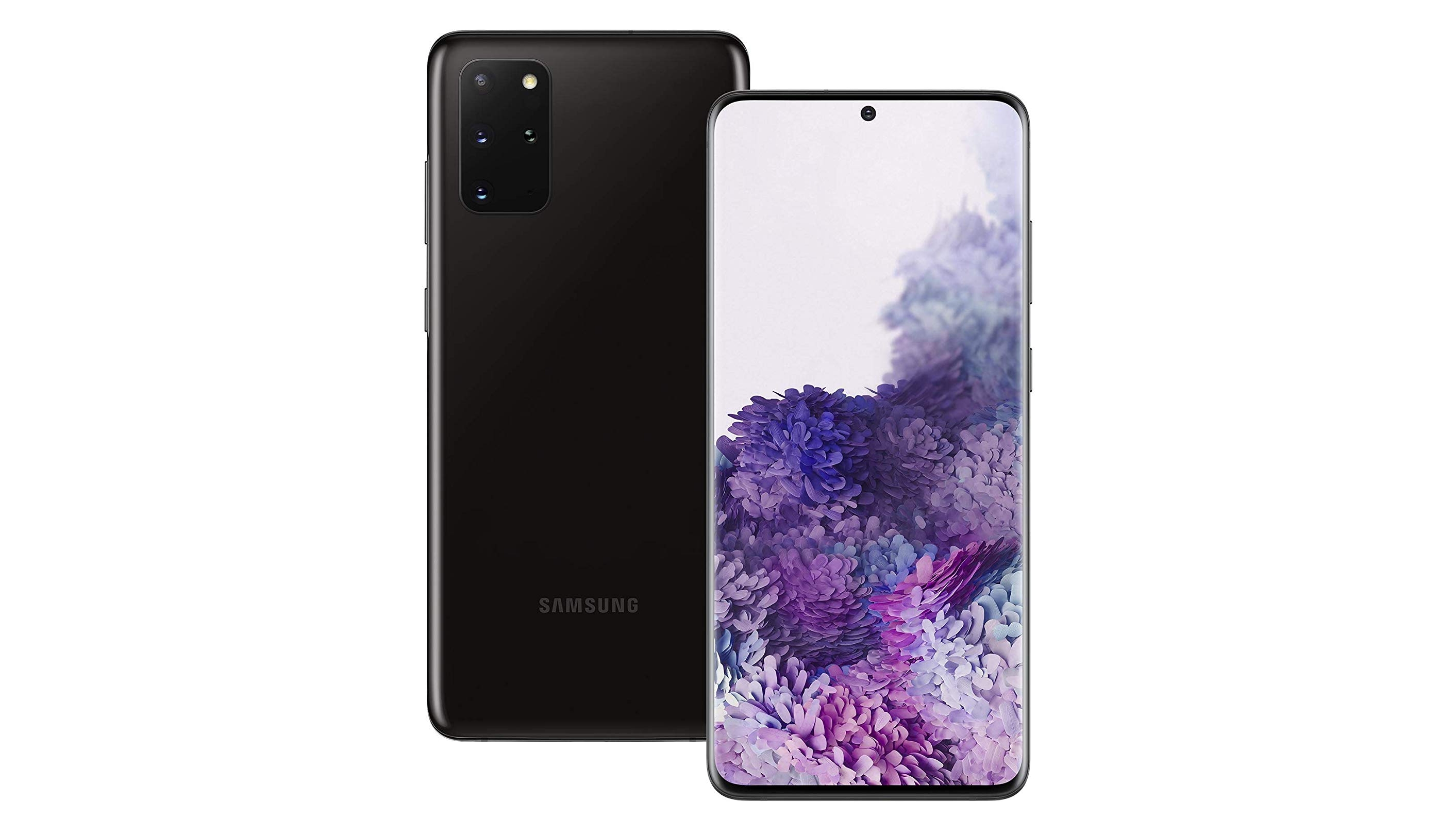
Samsung Galaxy S20+
The standard S20 isn't available in the US - presumably, Samsung feels that last year's handsets can do a job there - so the torch has been given to the Galaxy S20+ to lead the way. Yes, there's the S20 Ultra, below, but not everybody wants a maxxed out phone with a 100x zoom. The S20+ has most of its smarts, with a 6.7-inch screen only slightly smaller. And it still has a quad-camera setup, too, complete with 3x hybrid zoom and super-resolution 30x zoom.
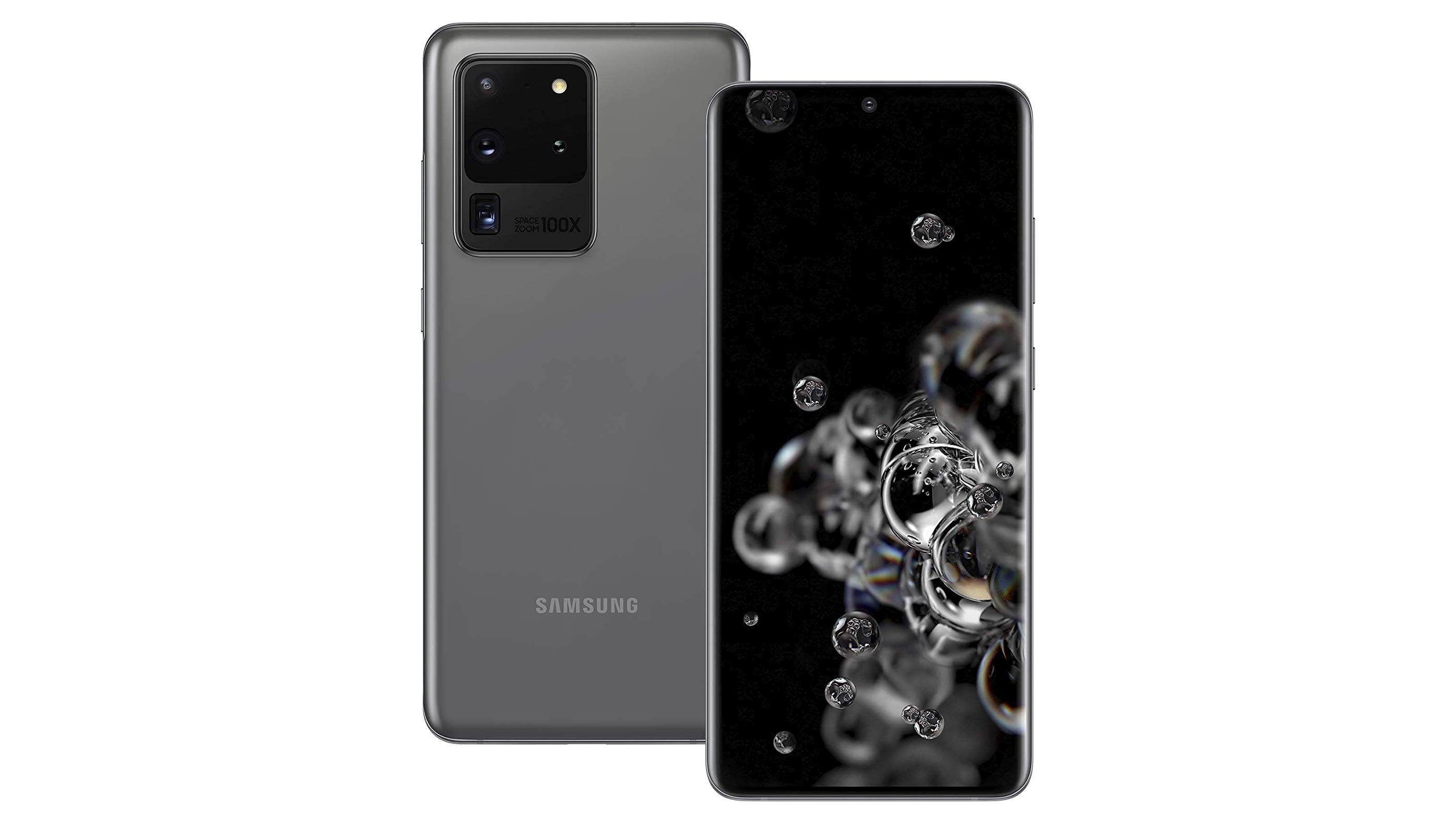
Samsung Galaxy S20 Ultra
Verizon is offering the range-topping S20 Ultra in both 128GB and 512GB versions in cosmic gray and black. The 6.9-inch S20 Ultra has an incredible 108 MP camera with a 100x zoom which, although not strictly necessary, produces some quite unbelievable results. The 3,200 x 1,440 display is a punchy OLED screen with fast 120 Hz refresh rate for brilliant results. What's more, it's capable of 8K video recording, too.
Verizon 5G coverage
Even though Verizon has rolled out mmWave 5G services in 60 cities so far, the coverage is hit-and-miss to say the least and it's concentrated in very specific areas for now. The network has now inked a $8.3 billion deal with Ericsson to expand Verizon's coverage including deploying network solutions across low-band, C-band and mmWave (millimeter wave).
Verizon's 5G Ultra Wideband network - as it is calling it - uses the high-frequency mmWave technology also favoured by AT&T and T-Mobile. Of course, one of the big benefits of 5G is vastly reduced latency and increased speed, and it's here that you see the difference with mmWave.
In a comparison of 5G network speeds last year by Opensignal, Verizon took the top spot, beating the competition by some margin. Indeed, the Verizon 5G network has a peak speed of 390Mbps faster than the closest US network.
Verizon's videos show speeds in excess of 1Gbps at times, although you should expect speeds in the low hundreds of Mbps as normal, faster in specific areas.
Availability was another story. mmWave has a problem - while it's great for close-together cell sites in large cities, it's not so good for a rollout involving more rural areas where Verizon's 5G Nationwide service has to take a front seat. And mmWave services work mainly outdoors at the moment. We've even heard about being able to get 5G on one side of the street and not the other.
To broaden the coverage of mmWave, Verizon is using signal repeaters from FRTek and SureCall. Such repeaters make complete sense since they are small, consume much less energy than a small cell, and they don’t require a fibre connection.
Verizon officially won more spectrum in the 37GHz, 39GHz and 47GHz spectrum bands in the relevant FCC sale along with AT&T - between them the networks spent around $3 billion on the new spectrum. Spectrum is by far the most valuable commodity a network can own. Verizon shelled out an impressive $1.624 billion for 4,940 licenses in total. This spectrum will be used to further enhance the rollout of mmWave services across the US, predominantly in cities.
And now in early 2021 Verizon has spent $52.9 billion on doubling its existing mid-band spectrum holdings. "Since we began building 5G, we have had a first-mover advantage," said Hans Vestberg, Chairman and CEO of Verizon. "We are more than a year ahead in building and selling mmWave with our 5G Ultra Wideband service and still the only company with commercial Mobile Edge Compute.
"Now we intend to extend our lead by accelerating our deployment of C-Band. Our new C-Band position combined with our mmWave, means we are the only carrier suited to deploy the fastest, most powerful 5G experience to the most people - or as we call it, 5G built right."
Verizon 5G deals
Verizon's Prepaid Unlimited plan now offers 5G Ultra Wideband and 5G Nationwide.
The $75/mo Unlimited plan includes 5G Nationwide and Ultra Wideband where available. 10GB of 5G Nationwide and 4G LTE Mobile Hotspot is included in that plan.,
The three other Unlimited tariffs are Play More Unlimited ($45/month), Do More Unlimited ($45/month) and Get More Unlimited ($55/month).
The $35 Start Unlimited tariff is only available for 5G Nationwide rather than 5G Ultra Wideband. All the Unlimited tariffs include various perks such as free Disney+, Hulu and ESPN or free access to Apple Music.
You can also purchase a premium entertainment option, including Apple Arcade, Google Play Pass, Apple Music, Disney+, Hulu, ESPN+ and Discovery+.
You can get some of them for free with certain tariffs.
Check out Verizon's Unlimited data plans
Verizon 5G Home Internet
Verizon 5G Home Internet is being offered in very limited areas for now but the Verizon provides its own 5G router, made by Wistron. Naturally, it is restricted to the areas that 5G service is available in.
The service is free for the first three months, after which it's $50 a month providing you have another current Verizon Wireless plan over $30. (If you don't have this, it's $70 per month).
Ronan Dunne - executive vice president of Verizon's consumer business - mentioned Verizon's 5G Home target of covering 30 million US households within 5-7 years. We've heard that main number before, but it's good to hear that is still the target.
Verizon is being conservative with the duration of the target, primarily because the target market for 5G Home - those who live in suburban areas and other residential zones - aren't in locations where 5G networks are currently being built; most 5G rollout is taking place in dense urban areas.
Verizon 5G Business Internet is now available in parts of 42 US cities with more rollouts planned.
There's also a credit available to eligible customers of up to $1,500 to offset early-termination fees for switching from another Internet provider. The 5G Business Internet price is also fixed for 10 years according to the network.
The service is now available in Ann Arbor, MI; Akron, OH; Fresno, CA; Spokane, WA; Columbia, SC; Milwaukee, WI; Tampa, FL; St. Petersburg, FL; Memphis, TN; San Antonio, TX; Columbus, OH; Raleigh, NC; Durham, NC; Greensboro, NC; Seattle, WA; Tucson, AZ; Des Moines, IA; and New Orleans, LA.
Check out Verizon 5G Home Internet
Verizon 5G business
Verizon is aggressively chasing small businesses with some 5G Business Unlimited plans as low as $30 per month.
Verizon says the 5G era is all about fast, clear connections between people and devices and that there are huge benefits for businesses ready to step onto the wagon. Indeed, Verizon says that 5G Ultra Wideband is "paving the way for a new era of business innovations with ultra-fast speeds with ultra-low lag time, so your business will be able to compete like never before".
Verizon has now signed its first deal to supply a private 5G network to Associated British Ports - and more specifically, the Port of Southampton. The project will use Nokia gear and run using Nokia's Digital Automation Cloud.
“Verizon’s private 5G is the foundation for a completely dedicated edge compute infrastructure, enabling ultra-low latency at the premise, higher levels of security and deeper customization for our partners,” said Tami Erwin, CEO at Verizon Business.
“Businesses such as ABP are coming under more pressure to evolve their services at tremendous speeds in order to take advantage of new commercial opportunities. Along with Nokia, we have been able to equip ABP to take advantage of the immediate benefits private 5G offers, and most importantly prepare the Port of Southampton to take full advantage of new technology applications and real-time analytics which will digitally transform its services in the future.”
In the US, Verizon has followed up its deal in the UK with a private 5G network product called On Site 5G. For enterprises and the private sector, On Site 5G uses 5G Ultra Wideband as a private network regardless of whether the area in question has a public 5G network. The network can also work alongside 4G LTE if required and can integrate with the organisation's other networks.
Because user and device access is controlled, the network can offer the privacy of on-premises networking.
“On Site 5G opens the commercial floodgates for the promises of 5G Ultra Wideband, allowing large enterprises and public sector organizations to custom tailor a 5G experience for any premises that demands it,” said Sampath Sowmyanarayan, Chief Revenue Officer of Verizon Business.
“It’s the bespoke business service for what we do better than anyone else: build 5G networks that enable even the most advanced wireless, MEC, and IoT capabilities for customers on the cutting edge.”
Verizon Business has also partnered with Amazon Web Services (AWS) to deliver private mobile edge computing (MEC) to enterprise customers. Customers will be able to deploy a completely dedicated edge compute infrastructure on-premises, with ultra-low latency, higher levels of security and deeper customisation.
We also recently spoke to Maggie Hallbach - vice president of business development and strategic sales for the public sector at Verizon abut how 5G is changing things there, especially in terms of healthcare.
"5G will be a game-changer for healthcare – revolutionizing the way doctors train, prepare for and perform surgery and give patients access to the best specialists regardless of where they live. 5G speed, massive bandwidth and low latency will allow healthcare professionals to access a wealth of data - in near real-time.
"Last year, Verizon lit up the first 5G enabled hospital at the VA hospital located in Palo Alto, CA. By leveraging Verizon’s 5G Ultra Wideband network, the VA is using Medivis’ imaging software and Microsoft’s HoloLens to help doctors prepare for surgery and train medical students while enhancing the quality of care for veterans through telemedicine.
"Using 5G and Medivis’ solution, MRI scans can be transformed into rich, holographic images that radiologists can reference in near-real-time and even project onto the patient to better guide procedures."
Verizon is also in talks with Walmart to install a 5G-based healthcare system in-store. The service would enable customer data to flow between the store and a clinic so customers can pick up the medical supplies they need.
Verizon is also co-operating with other big network names globally including Telstra and Vodafone on a 5G specification group called the 5G Future Forum. The goal is to provide standardised practices so that businesses can rely on. The mission is defined as aiming to "accelerate the delivery of 5G and mobile edge computing" globally.
According to Ericsson's This is 5G report (PDF), speed and lower latency are among the key 5g attributes that will bring new opportunities to business as Verizon's network rolls out.
For Verizon, the benefit of having real-world use cases for its 5G service are clear, while Walmart will be able to become the default choice for medical supplies for some customers.
Get up to speed with 5G, and discover the latest deals, news, and insight!

